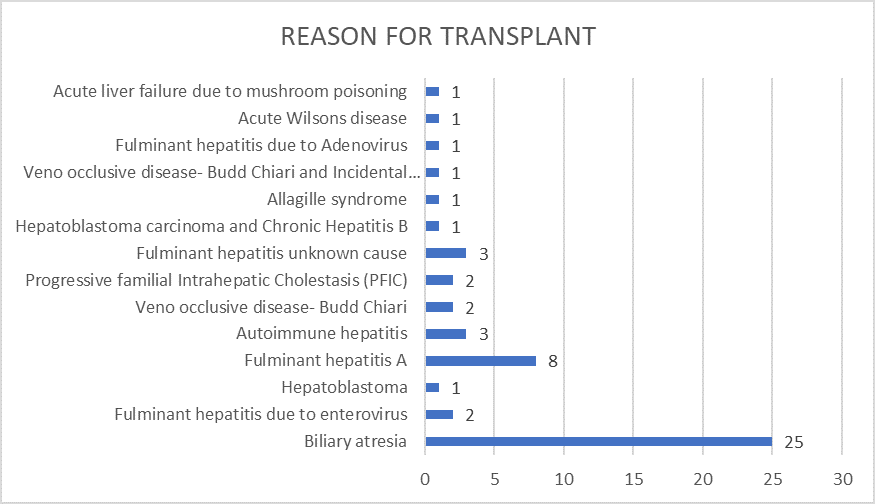Effects of calcineurin inhibitors on renal function in paediatric liver transplant recipients at a tertiary academic hospital
Karabo Lesley Leotlela1, Priya Walabh1, Tholang Khumalo1.
1Paediatrics, University of Witwatersrand , Johannesburg, South Africa
Introduction: Liver transplant is the most emerging procedure that has been shown to significantly improve the survival and quality of life for paediatric patients that have been diagnosed with end- stage liver disease. However, calcineurin inhibitors (CIs), particularly tacrolimus, which is the cornerstone of transplant immunosuppressive therapy, has been associated with nephrotoxic side effects leading to varying degree of renal dysfunction. Despite improved transplant outcomes, renal dysfunction remains a critical concern, with limited data documenting the impact of tacrolimus on renal function in South African paediatric liver transplant recipients. The study aimed to describe the effects of calcineurin inhibitors (tacrolimus) on the renal function in paediatric liver transplant recipients over a 2 year follow up period.
Methods: Fifty-two patients were included with females constituting most patients at 57.7%(30/52). The age at presentation was 24months (IQR 9.5-50.5), while the age at transplant was 33.85months (IQR 18.5-60.4). Biliary atresia was noted to be the most common indication for transplant (48.08%), followed by fulminant liver failure due to hepatitis A (19.2%) and autoimmune hepatitis (5.77%).

A significant decline in eGFR was observed post- transplant, from a mean of 240.40mL/min/1.73m2 pre transplant to 171.67mL/min/1.73m2 at 2 year follow up (p<0.001). A moderate negative correlation was found between tacrolimus levels and eGFR (r= -0.45, p<0.001) (r= -0.1408, p 0.3195 at one month post transplant, then at 3months, r= -0.2196, p 01177 and at 6months r= -0.2906 p= 0.0366).

Renal dysfunction was noted in 15% (8/52) of patients, and 1.9% (1/52) required renal replacement therapy. Kaplan- Meier analysis indicated a 94% renal survival rate at 2 year post transplant.
Conclusion: Tacrolimus treatment in paediatric liver transplant recipients is marked by an initial significant early decline in renal function, correlating with higher drug levels. Close monitoring and individualised dosing are essential in preventing long term nephrotoxicity and improved graft and patient outcomes. This study highlights the importance for local data to inform post transplant management care and optimise renal health in this vulnerable population.
[1] immunosuppression
[2] Calcinuerin inhibitors
[3] Nephrotoxic
[4] Paediatric liver transplant
[5] Tacrolimus